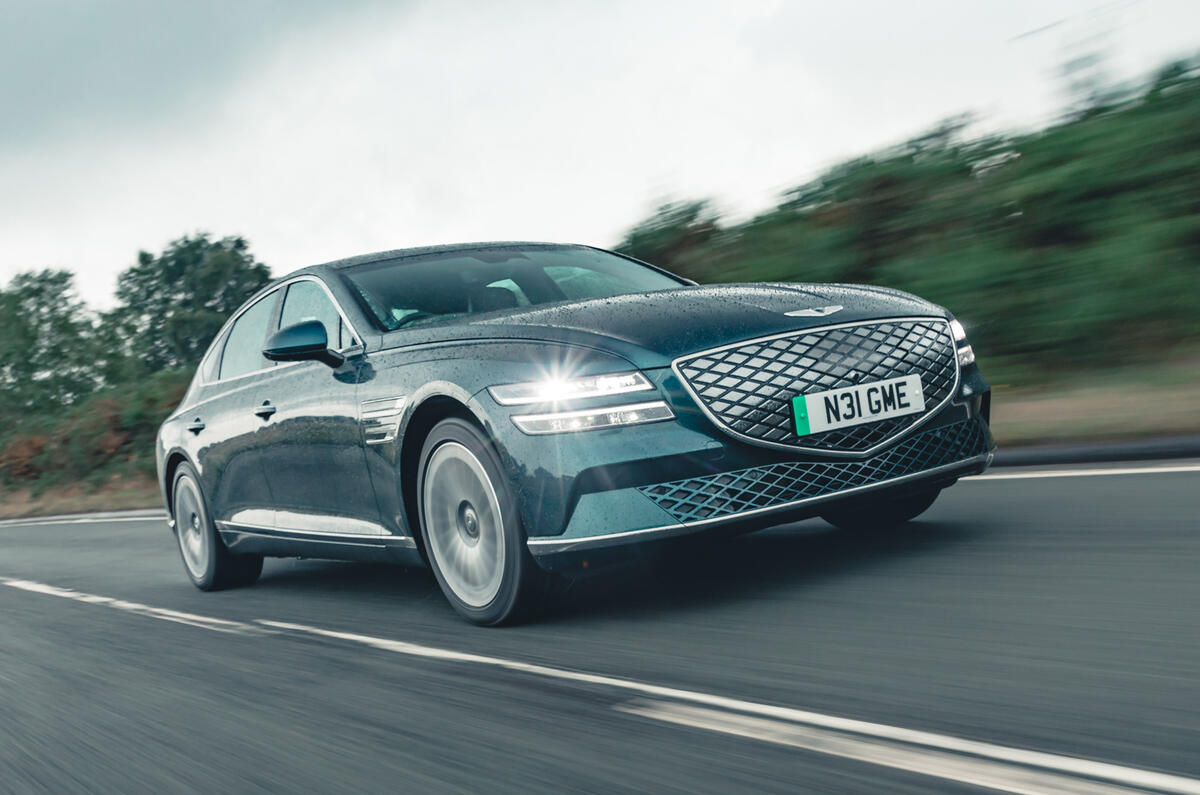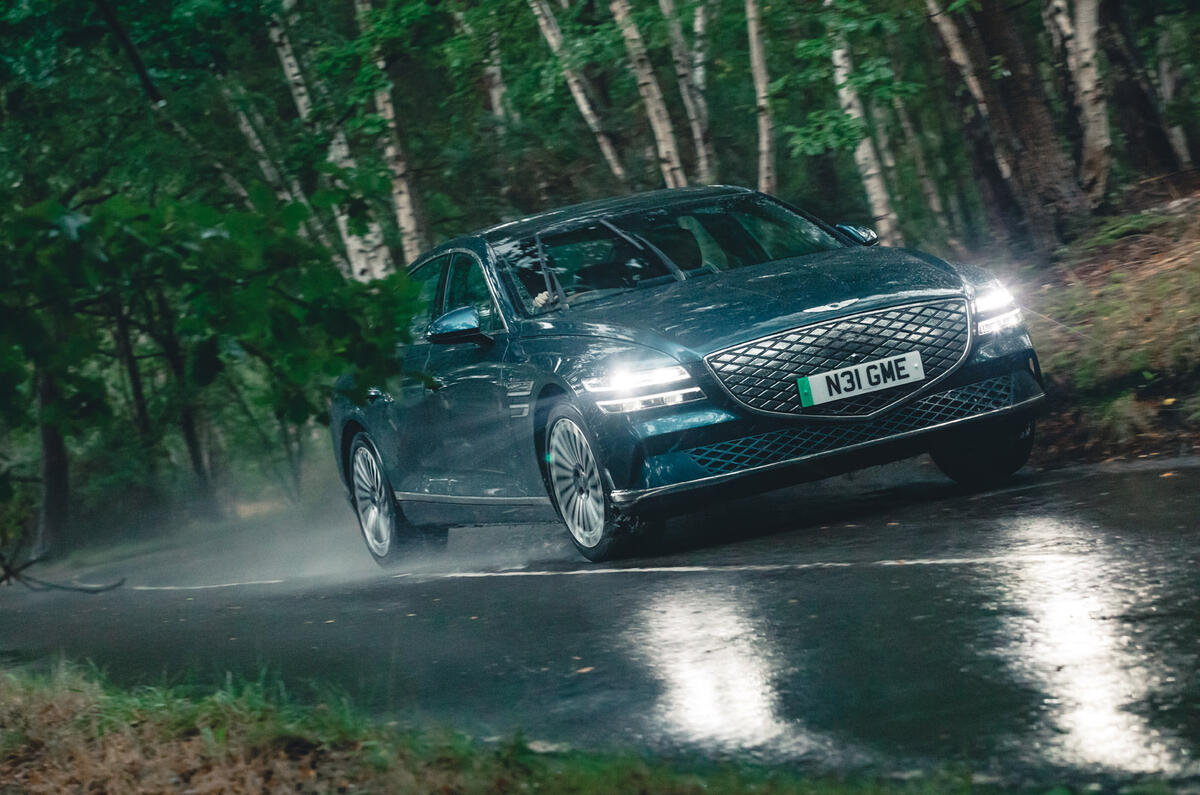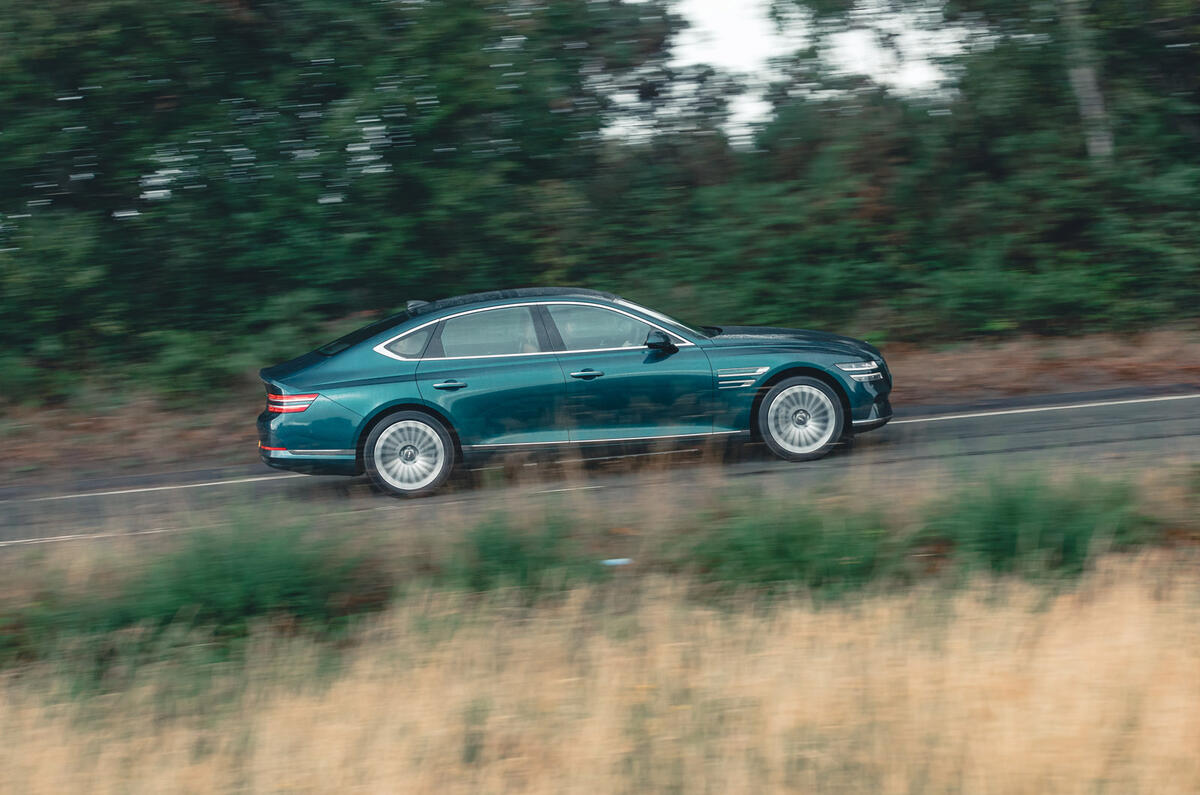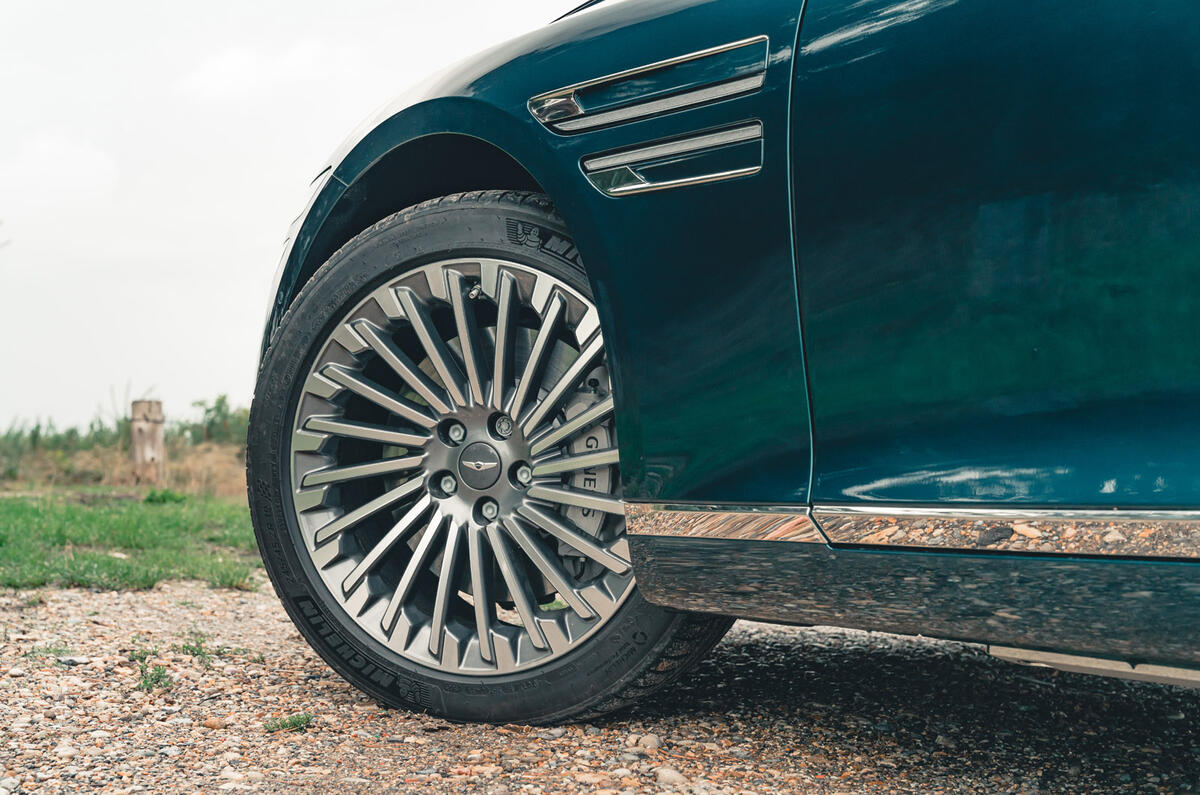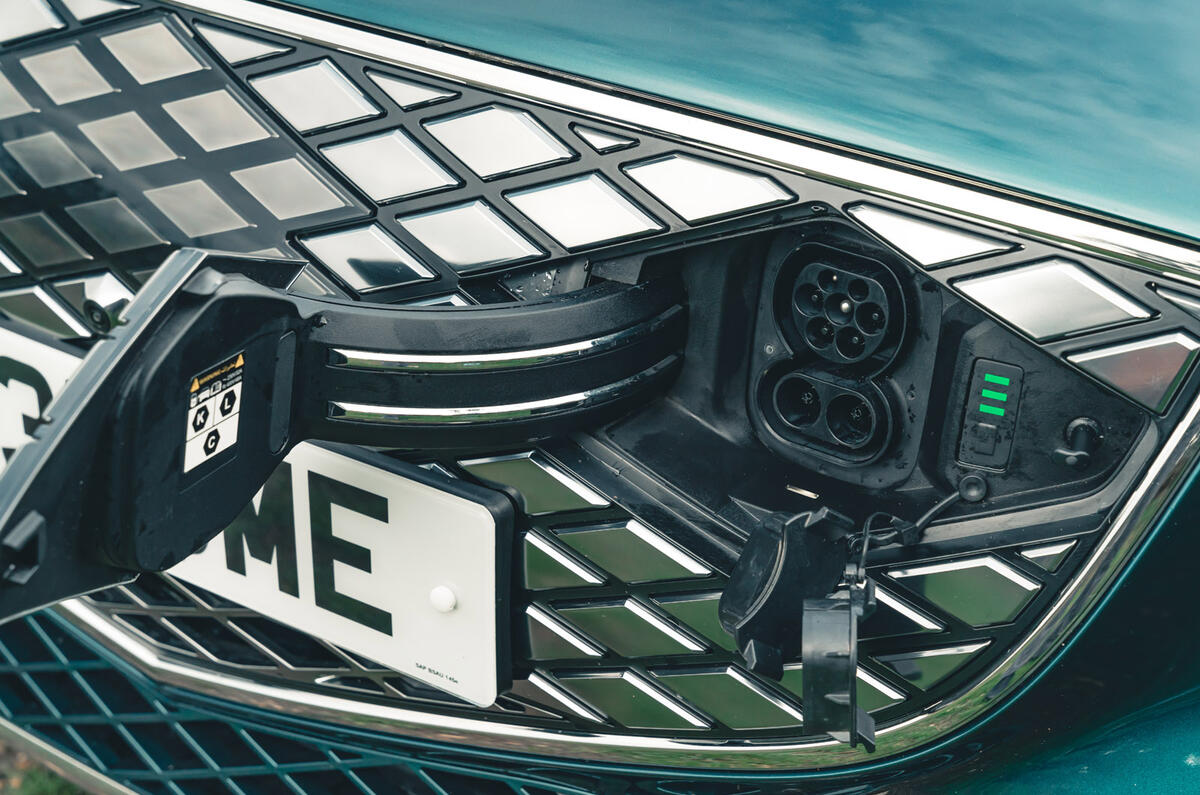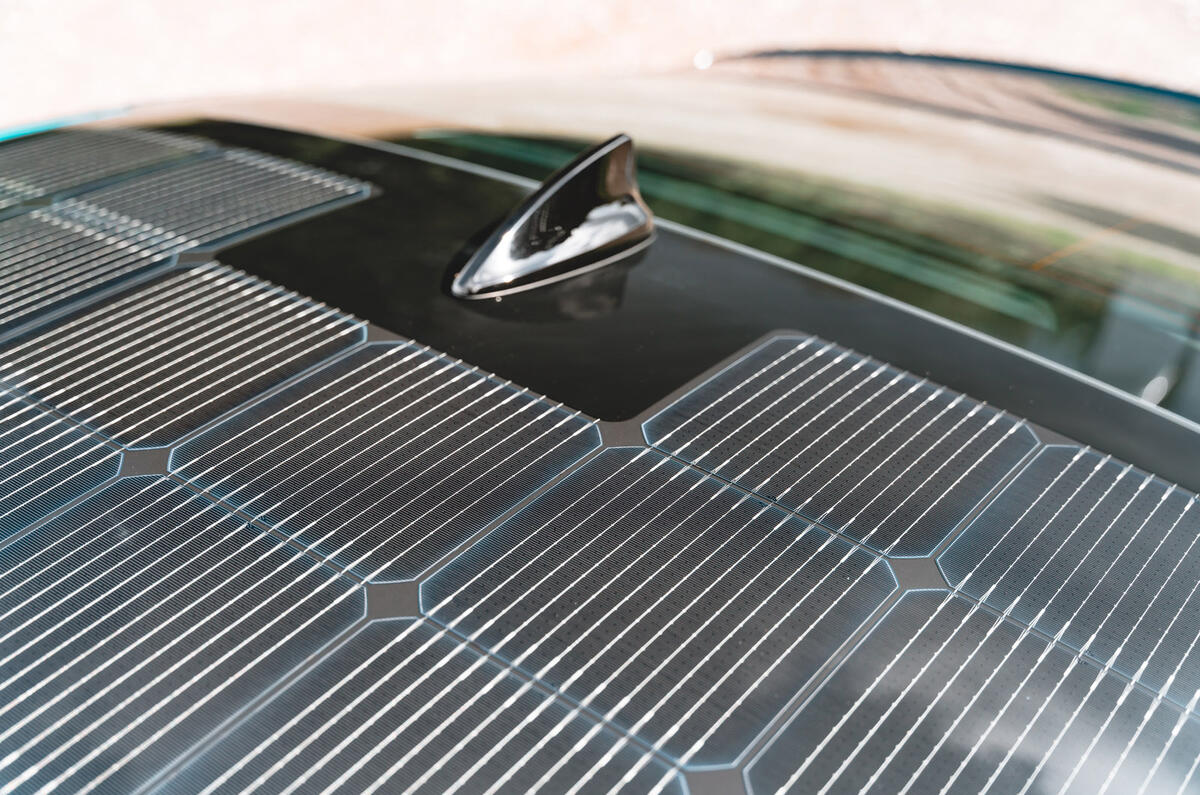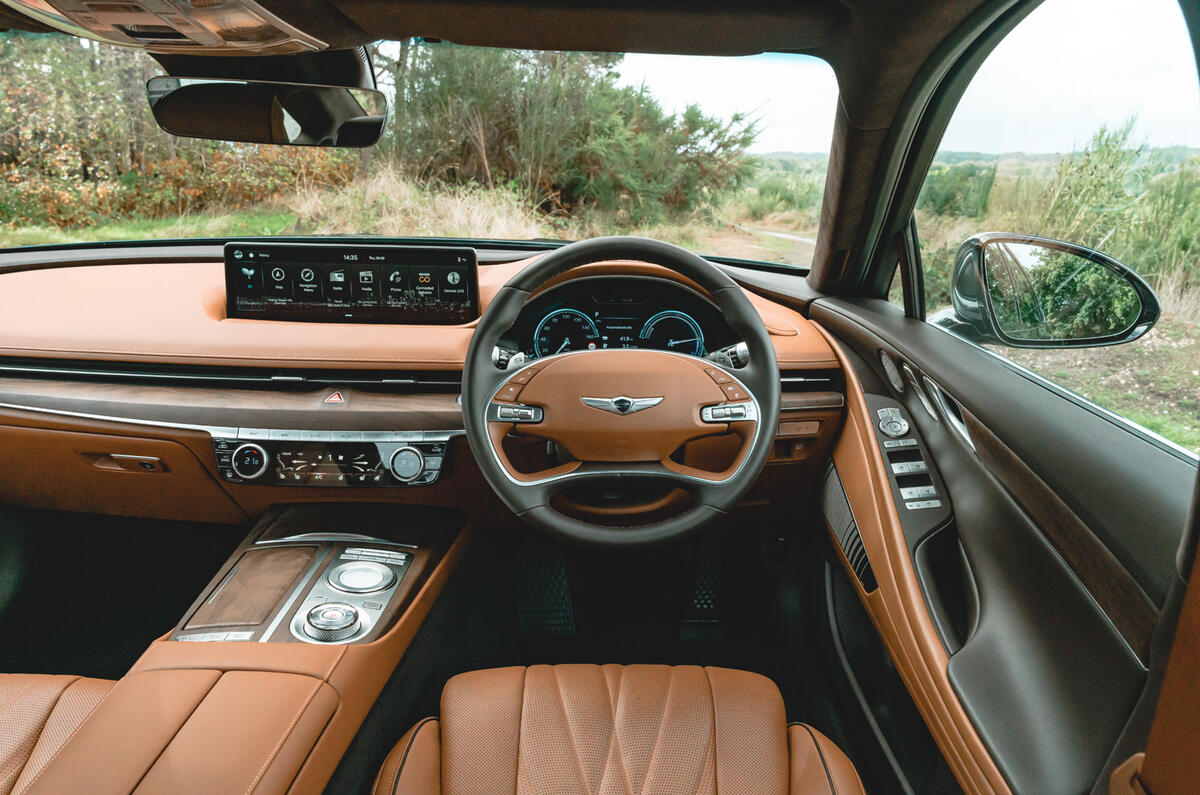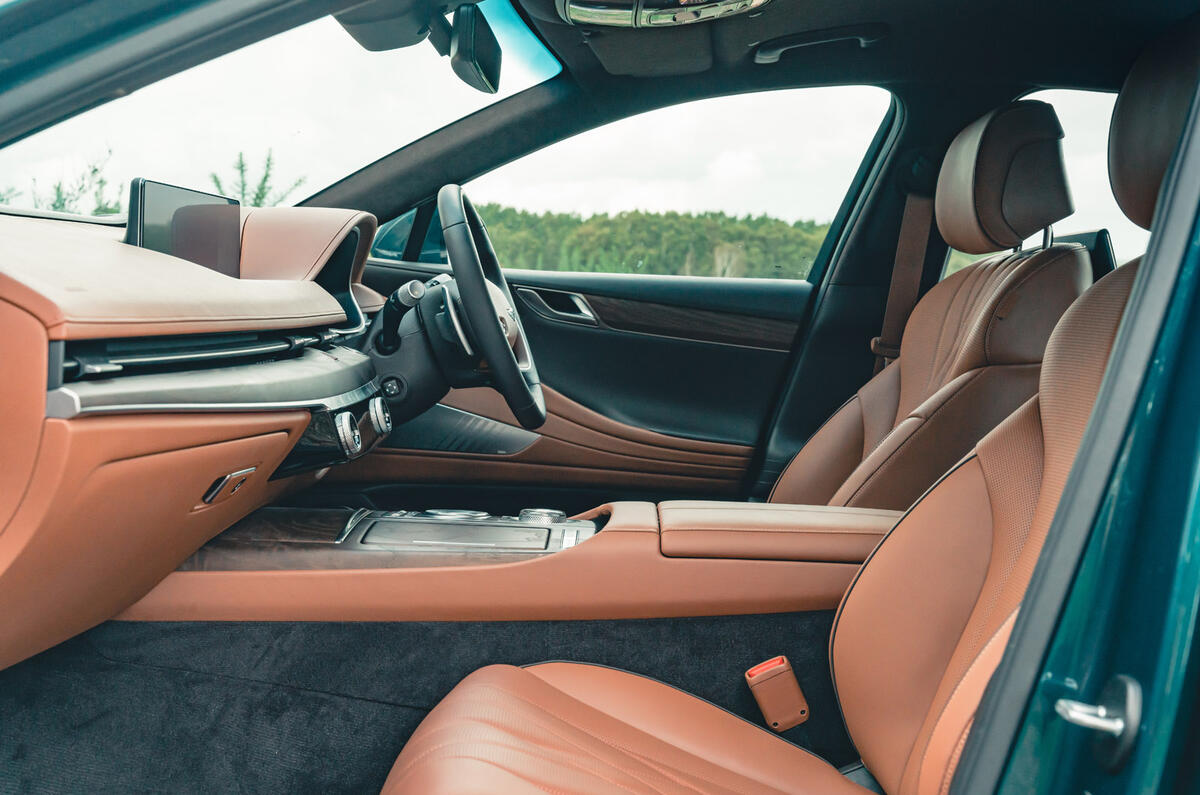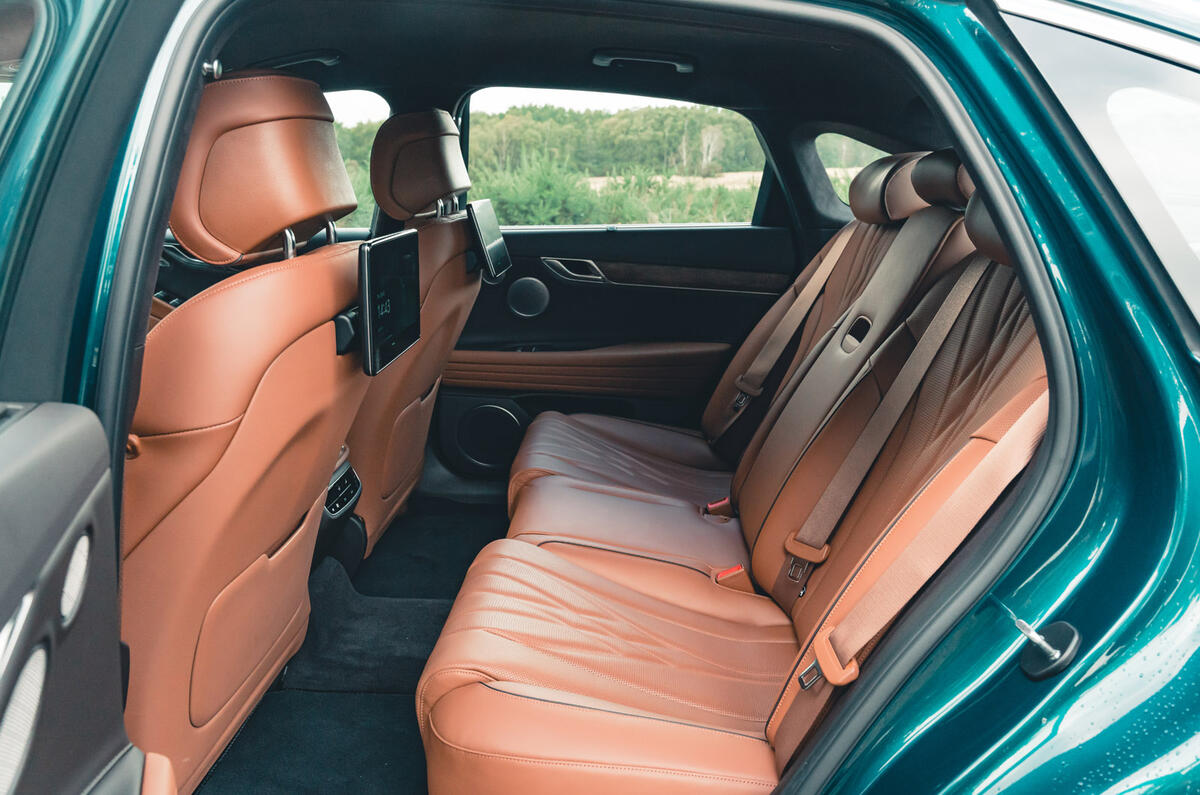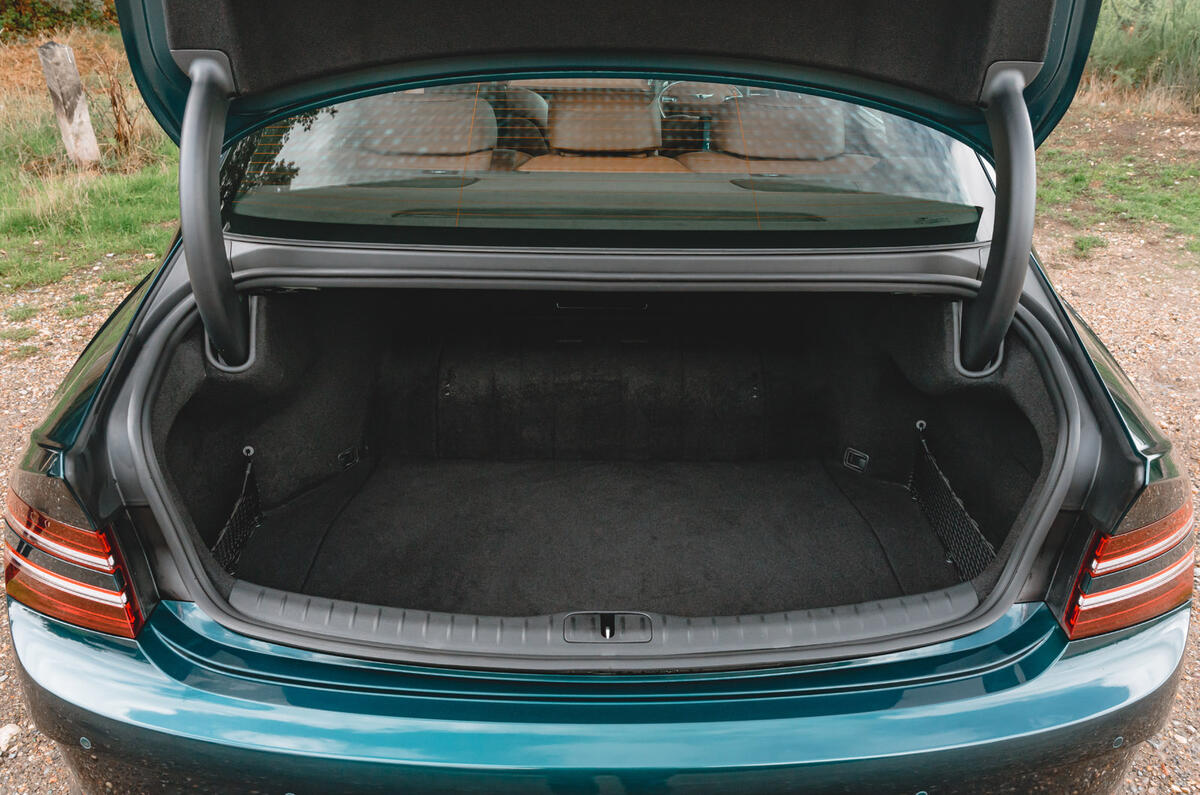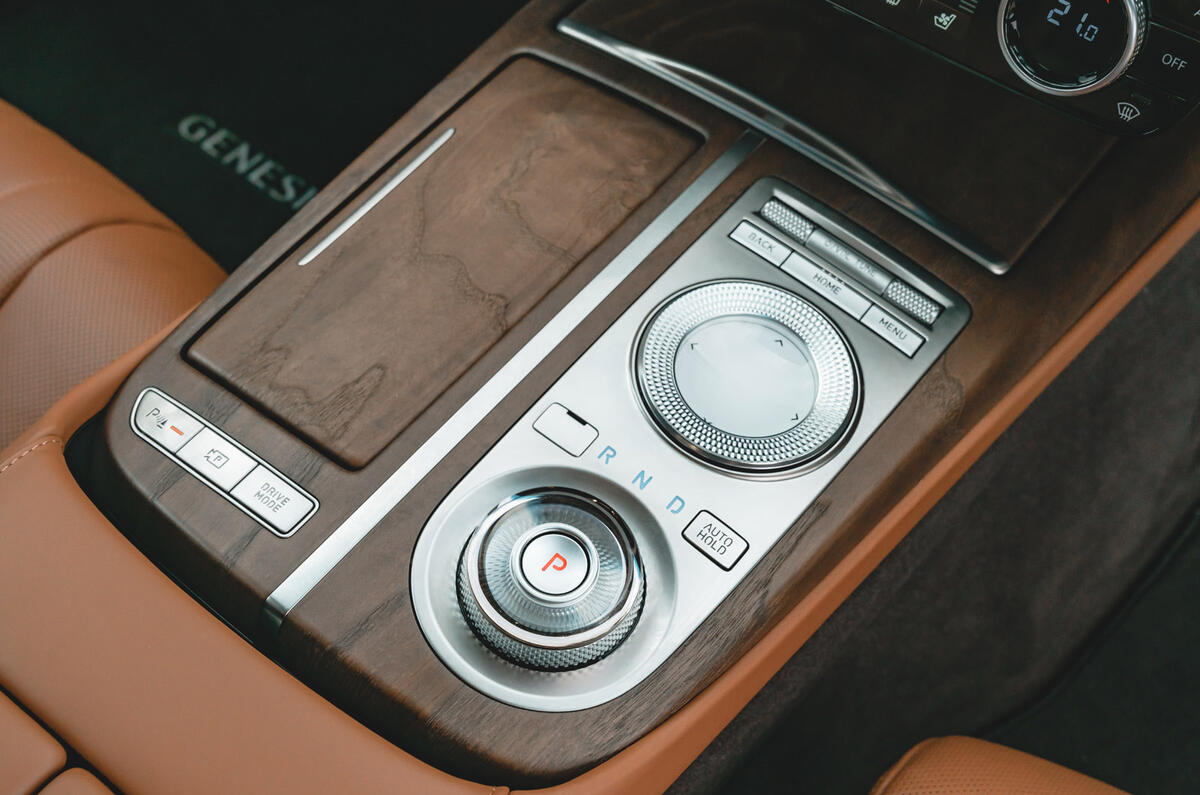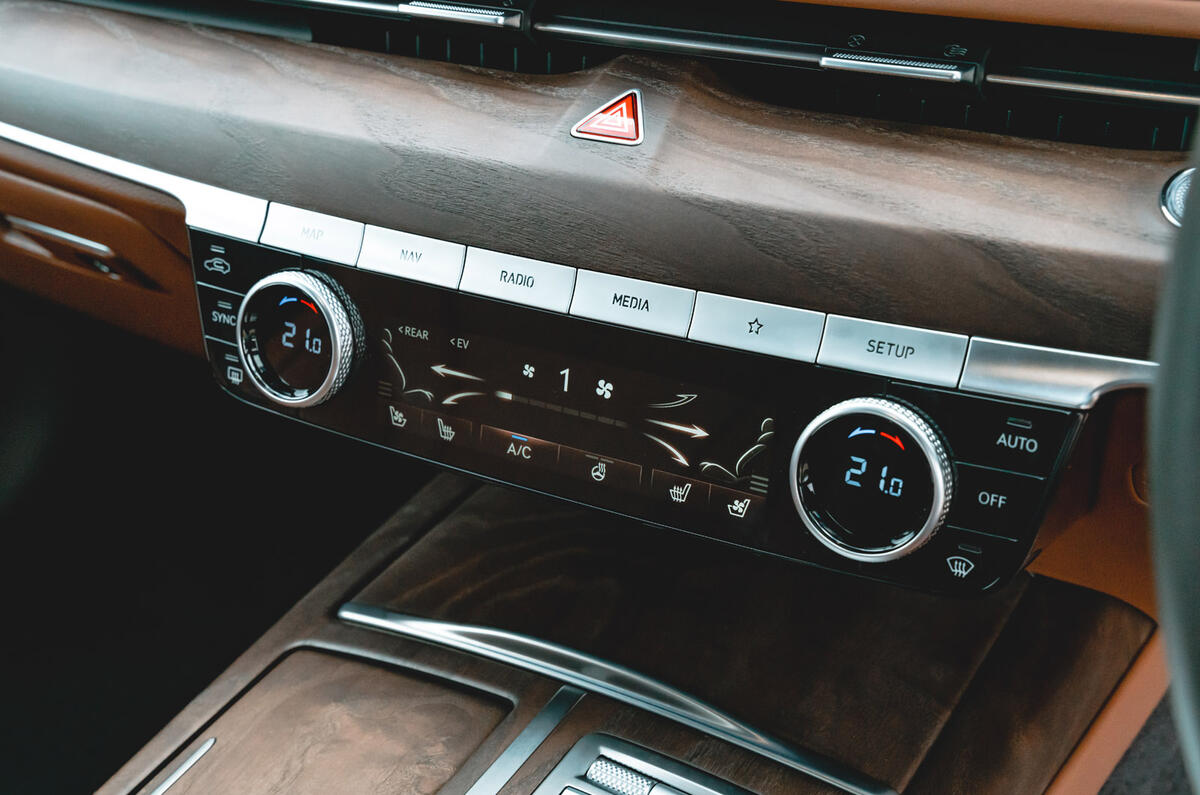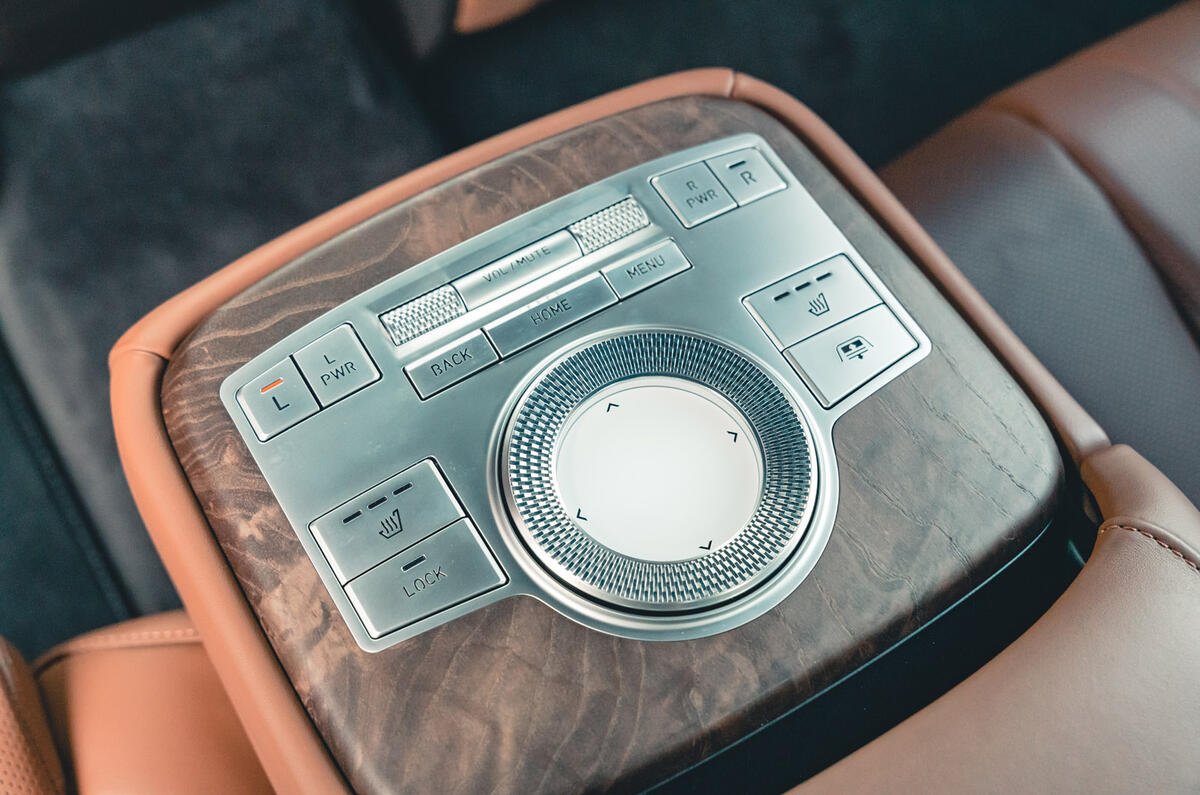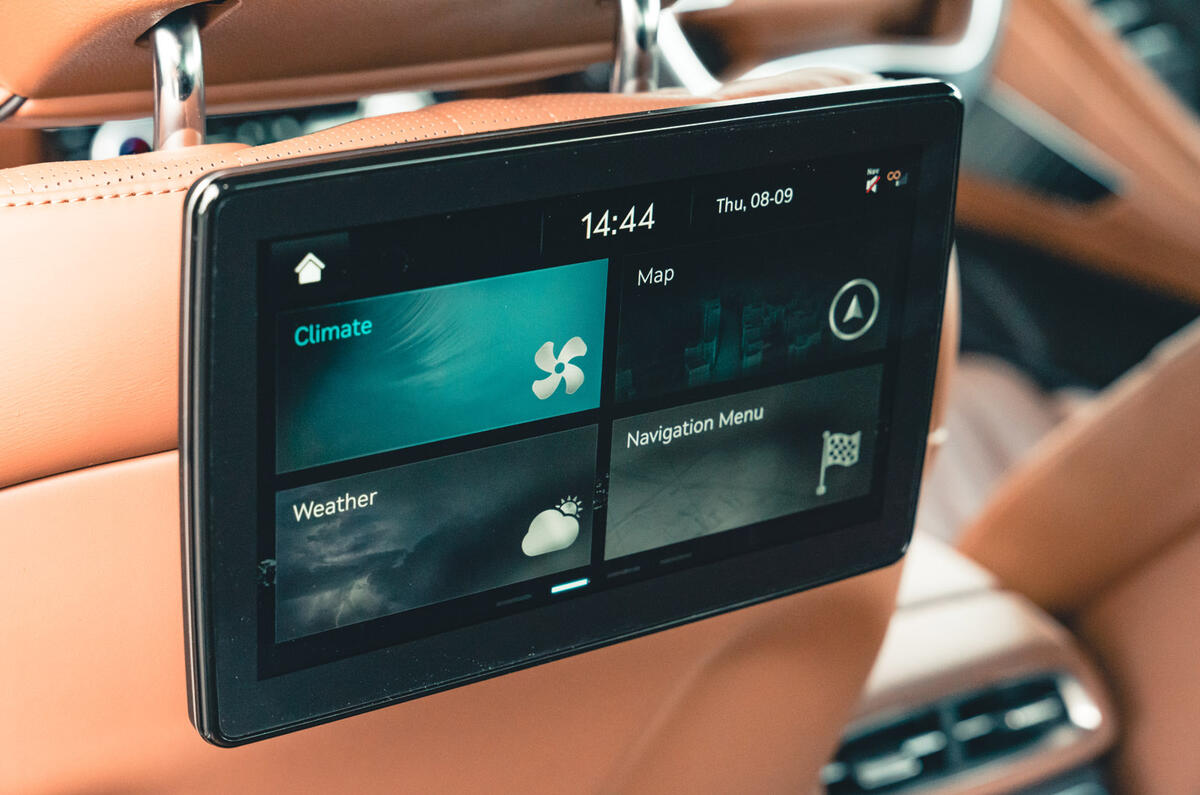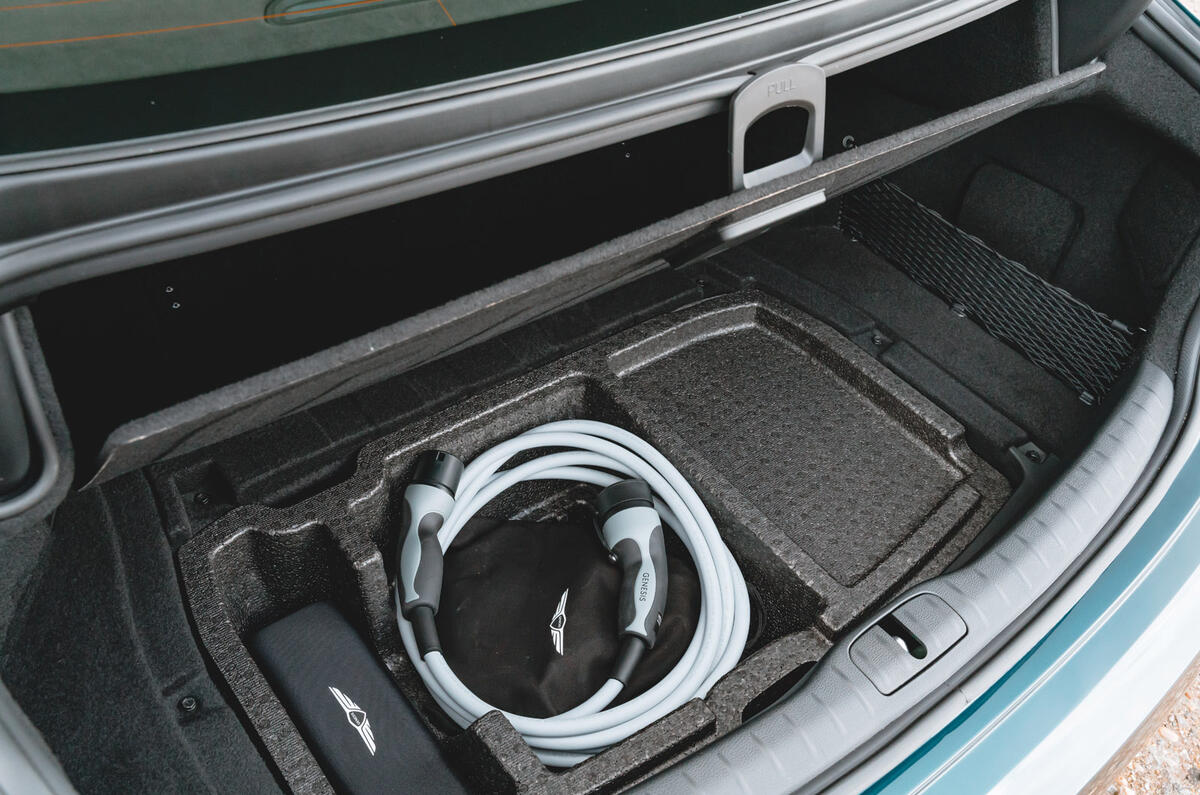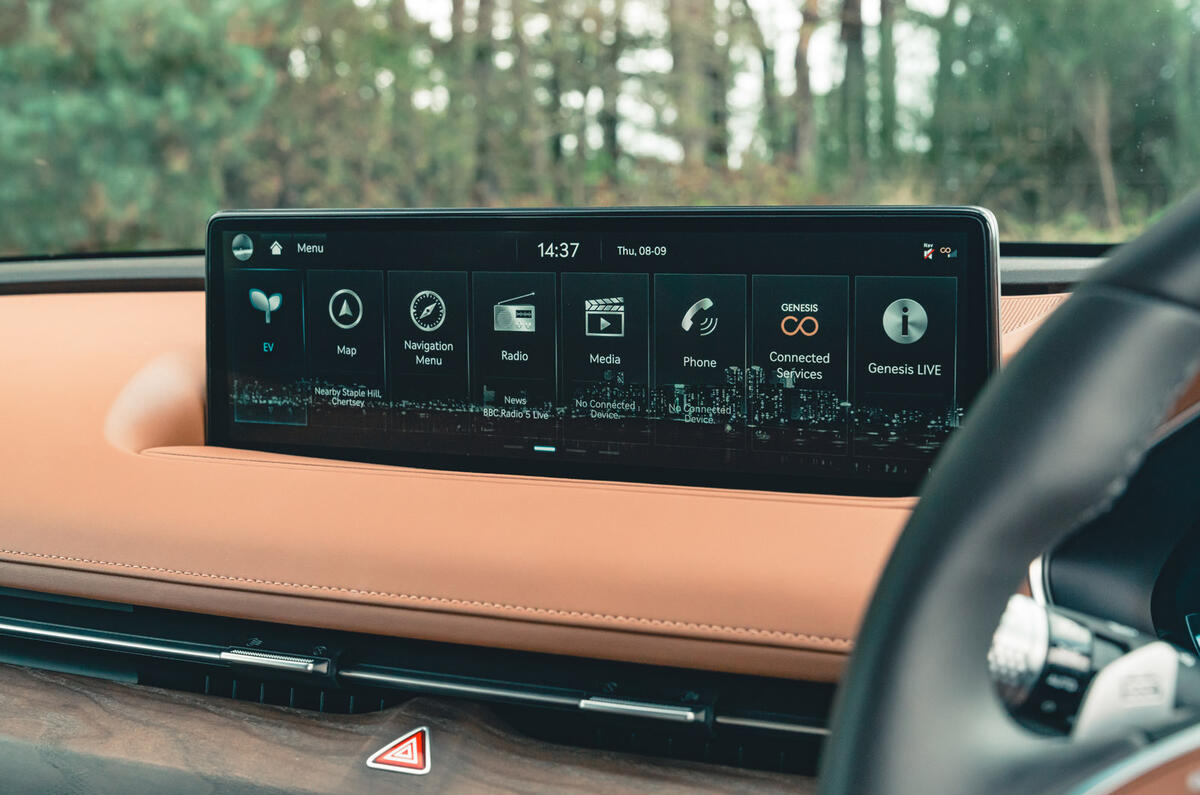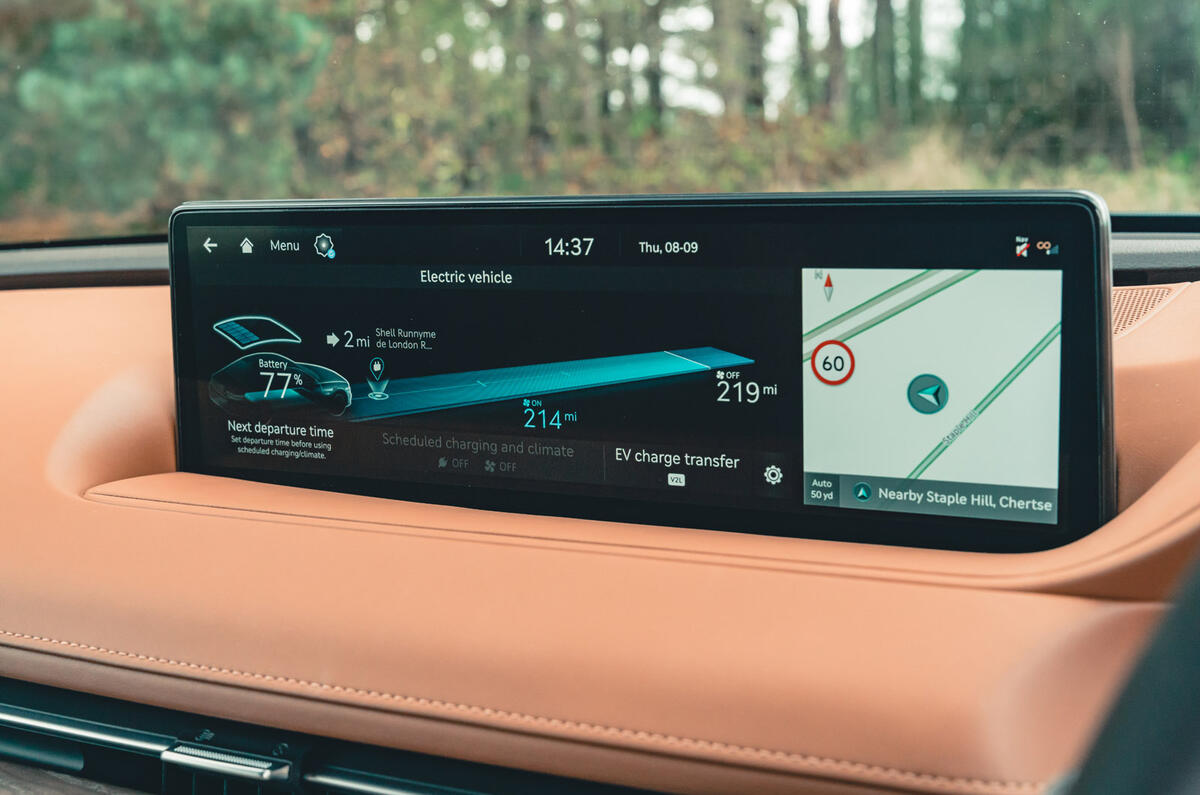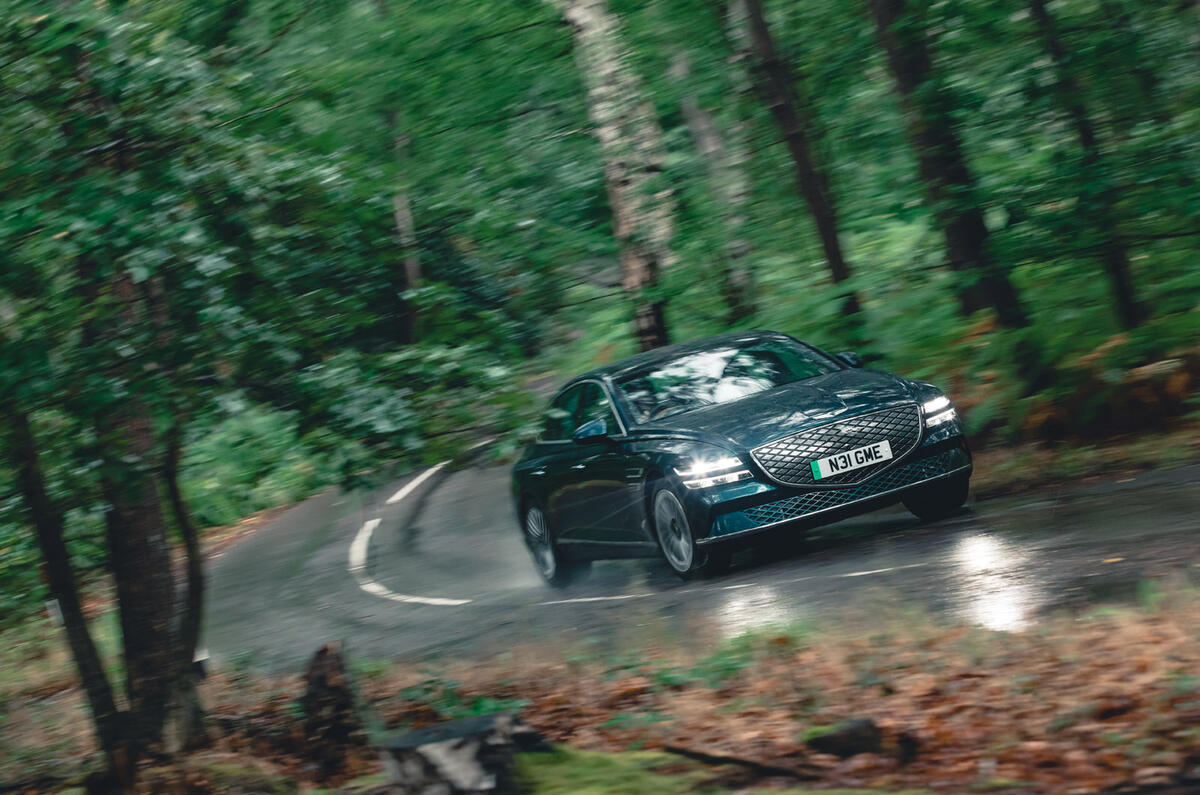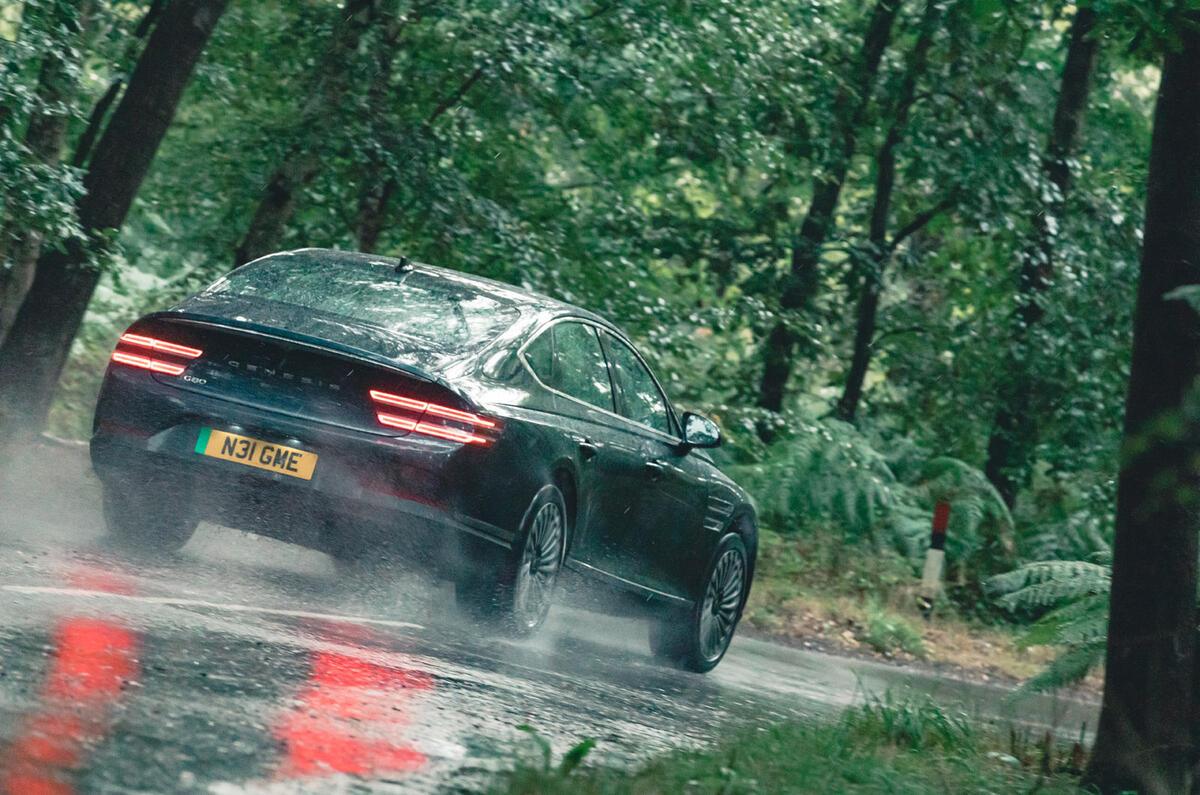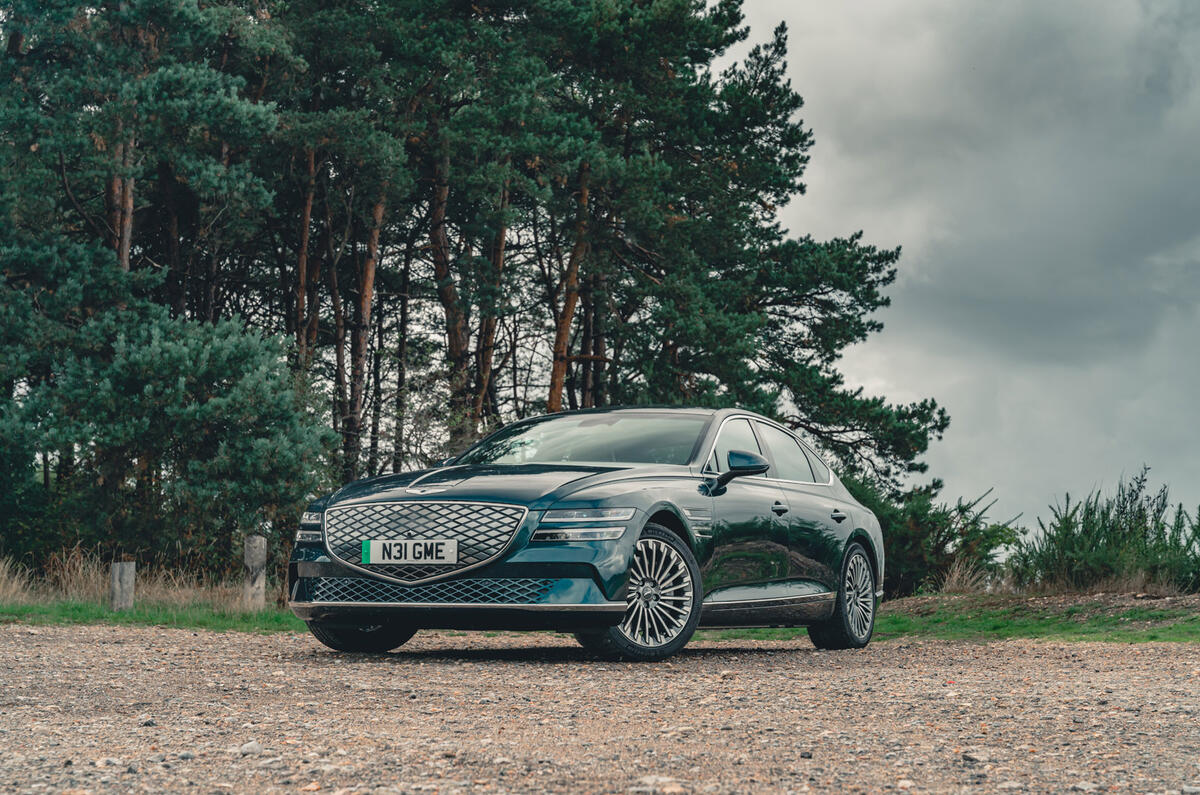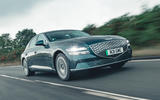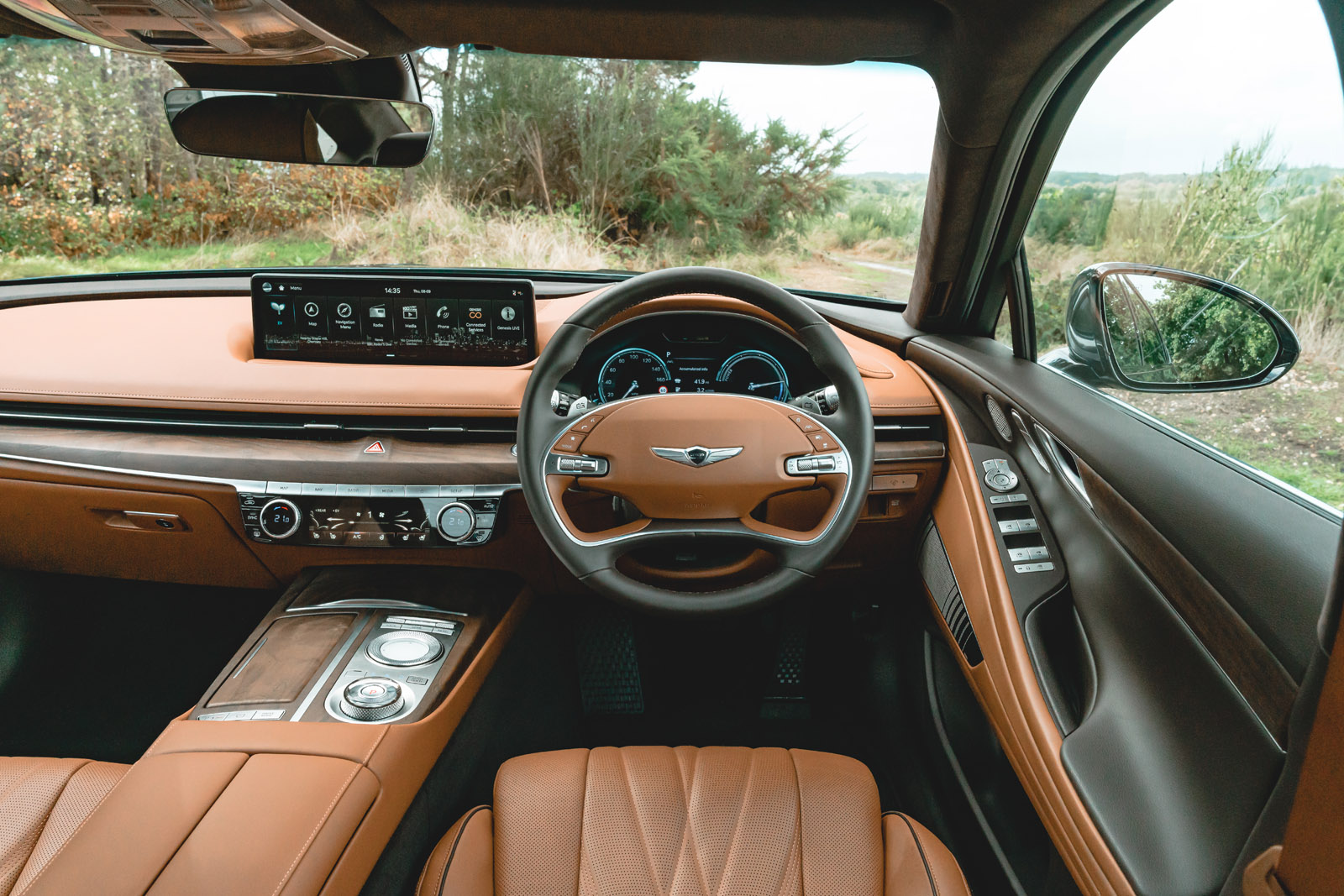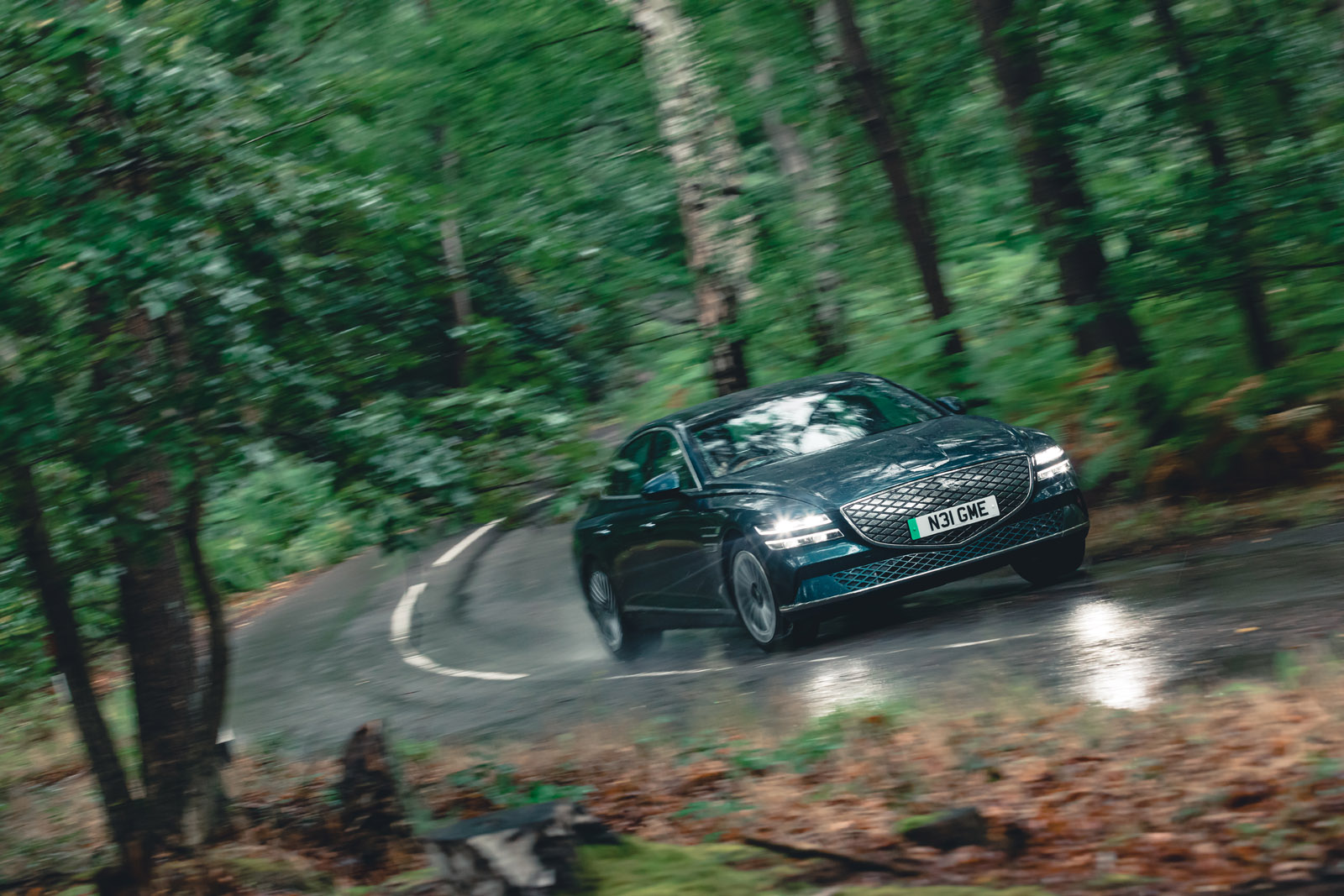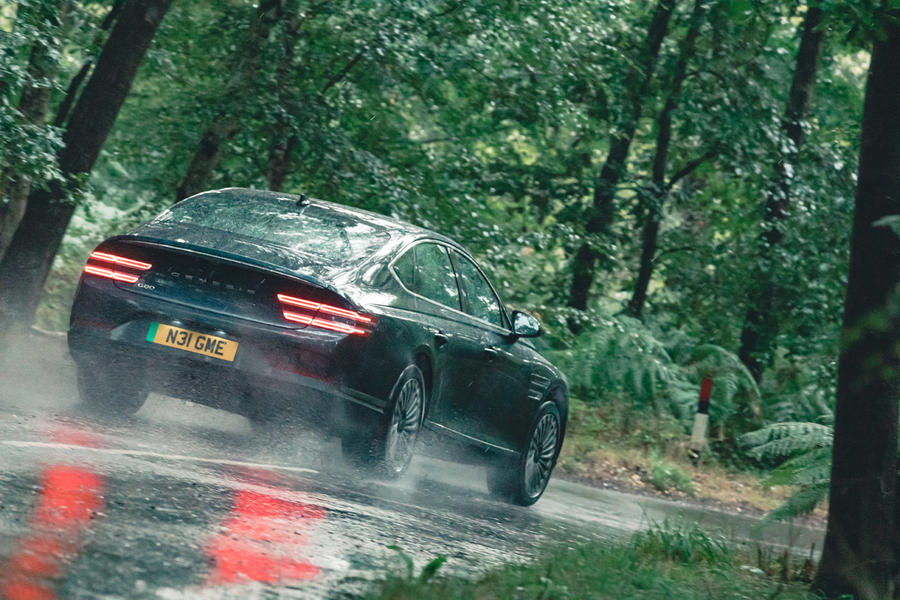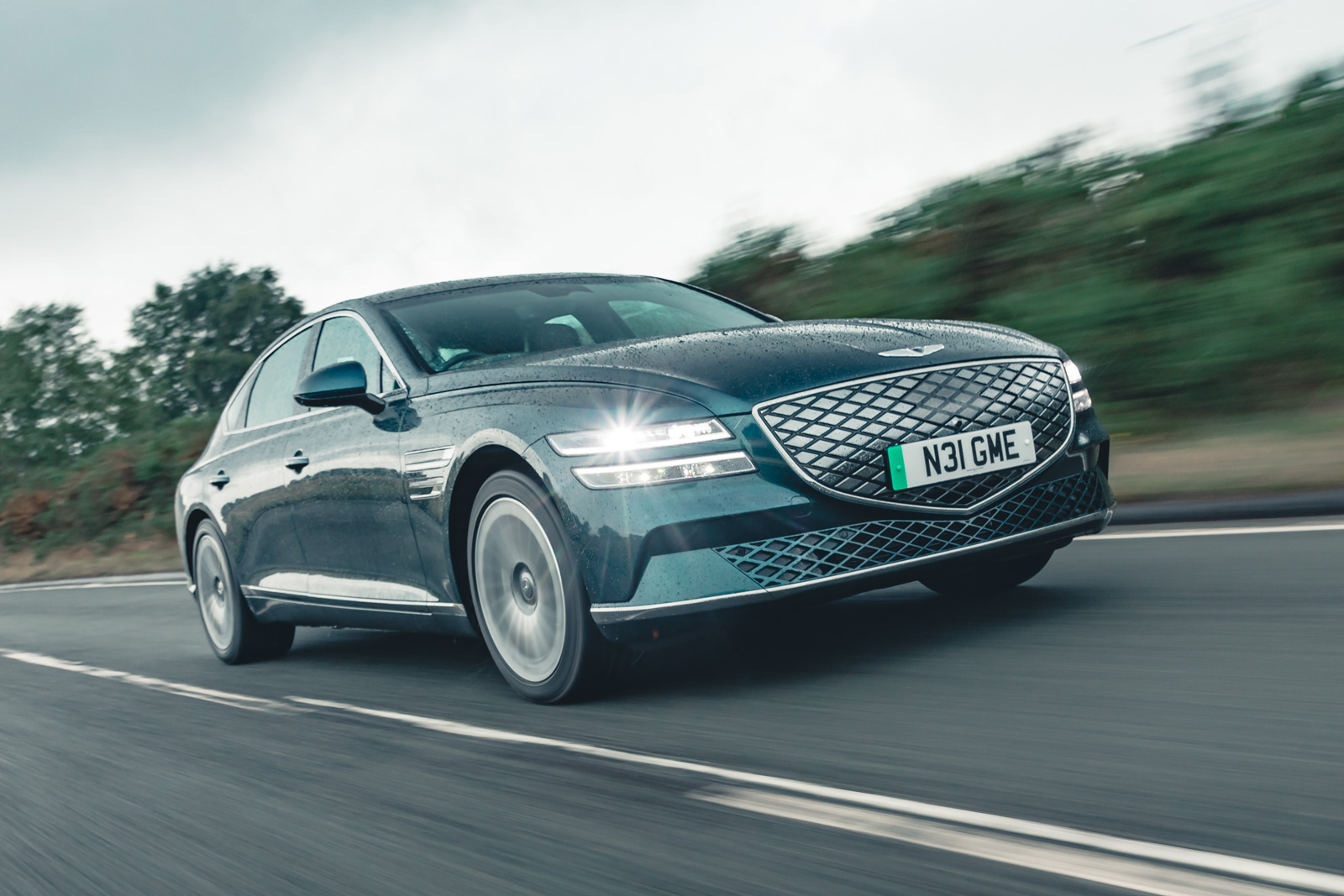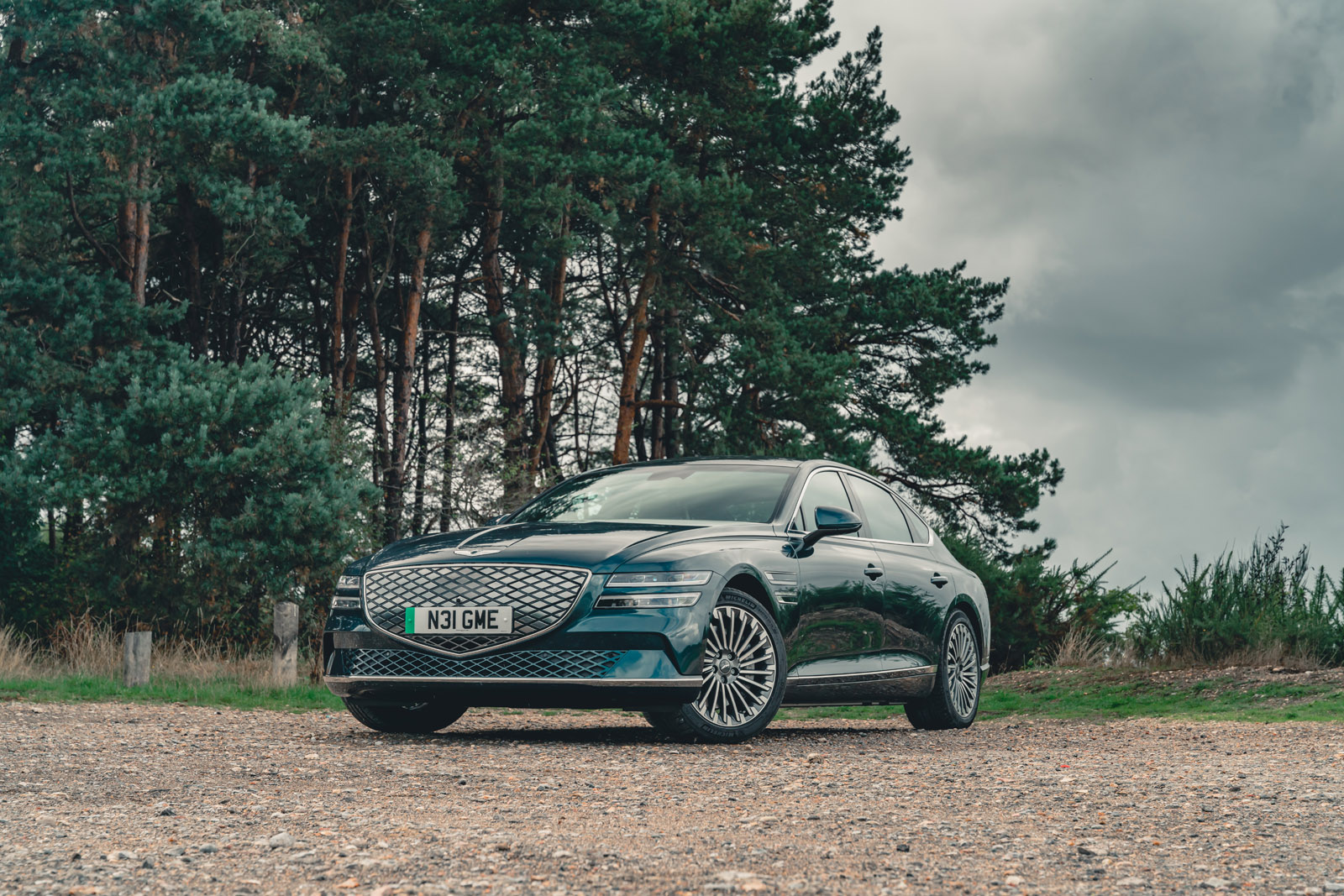Every Genesis we have driven so far has impressed with its interior ambience, and the Genesis Electrified G80 is no different. The perceived quality is sky-high thanks to real wood that actually feels real, sumptuous leather and soft-touch materials everywhere that matters. Genesis’s interpretation of luxury is quite a traditional one, so it won’t appeal to those who prefer the more technical, clinical style of most Audis, but within our road test team at least, it has garnered plenty of fans.
Helping with that immensely is Genesis’s philosophy of combining the obligatory large touchscreen with a rotary selection dial for the excellent infotainment system, plenty of shortcut buttons and physical controls for the climate controls.
It all makes this car a very nice place in which to spend time, but it is certainly not the most practical large saloon. The standard G80 isn’t the roomiest car in its class anyway, and the battery in the Electrified Genesis G80 takes another chunk out of the usable space.
To accommodate the battery pack, the front seats have been pushed up by around 10cm, which creates quite a high driving position – fine in an SUV, but rather odd in a saloon. Head room isn’t really the issue – but if you are tall, you might feel hemmed in and perched over the controls.
Our test car had the Executive Pack (costing £3020 on top of the £1580 Comfort Seat Pack), which adds rear sunshades, two screens for the rear passengers, heated rear seats and controls in the rear armrest.
The screens let rear passengers check the map, weather and sport results, adjust the rear climate, and control the media. Those last two options are less useful than they seem, though. The centre console contains separate controls for the rear climate anyway, the rear screens can’t control Apple CarPlay or Android Auto, and there don’t seem to be any streaming services built in to the rear entertainment package.
Remarkably, Electrified G80 buyers get a worse deal from their Executive Pack than buyers of the regular G80, because the latter also has ventilated and adjustable rear seats that fold in a 40/20/40 split.
The screens suggest the Executive Pack is aimed more at parents than executives, but if you were to choose a G80 as your chauffeur car, it’s worth bearing in mind that it is more BMW 5 Series than 7 Series. There is also very little room under the front seats for rear occupants’ feet, so the rear accommodation doesn’t feel especially abundant. The seating position is comfortable, though, and there is plenty of head room.
The boot is most affected by the addition of a battery, as it has created a large step in the floor and precludes the option of a folding rear seatback.
Multimedia system
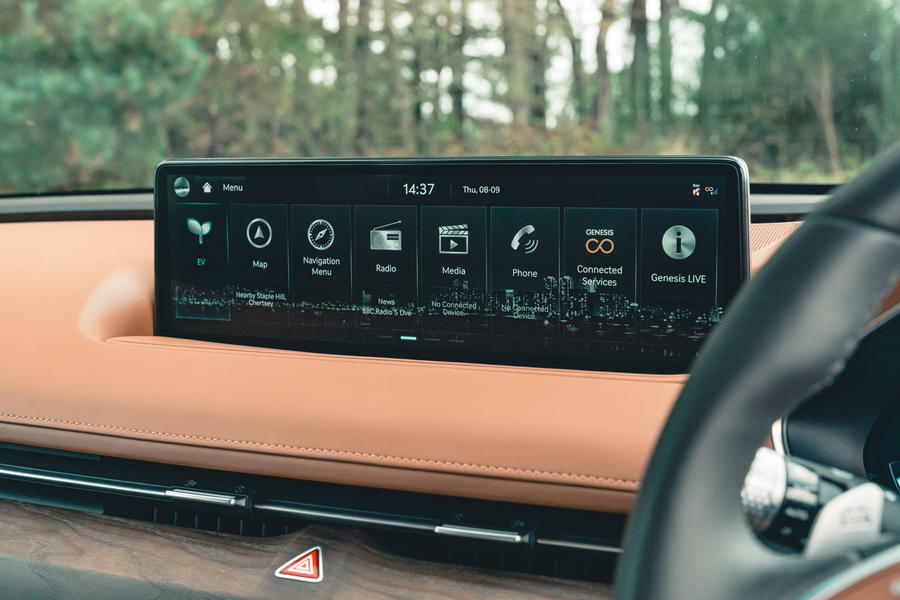
The infotainment is the same on most Genesis cars and it is one of our favourite systems on the market. This is in part because it is mostly logical and gives you lots of options to make the car behave as you would like, but mainly because it is controlled via the combination of a fast-acting touchscreen and a BMW iDrive-style rotary controller. The physical shortcut buttons are the finishing touch to one of the most intuitive systems around.
We found the built-in navigation clear and well informed of traffic congestion but lacking in EV-specific features, with outdated information about rapid chargers. An update to give the system live charger data is reportedly incoming but, for the time being, Tesla’s route planning still isn’t close to being matched.
The digital gauge cluster is clear but doesn’t allow for much customisation. There is a 3D effect, which some testers liked, while others found it headache-inducing and turned it off.


